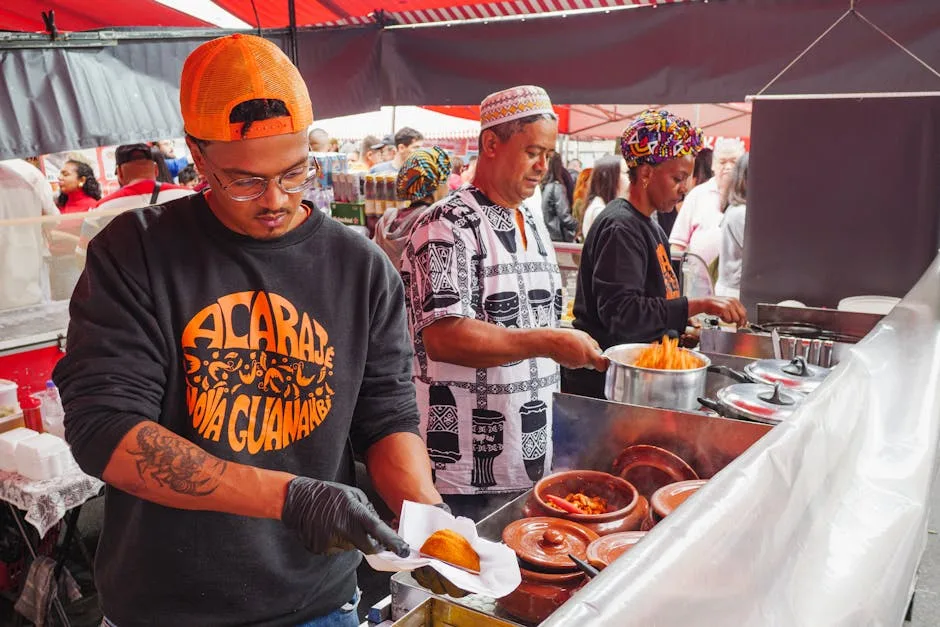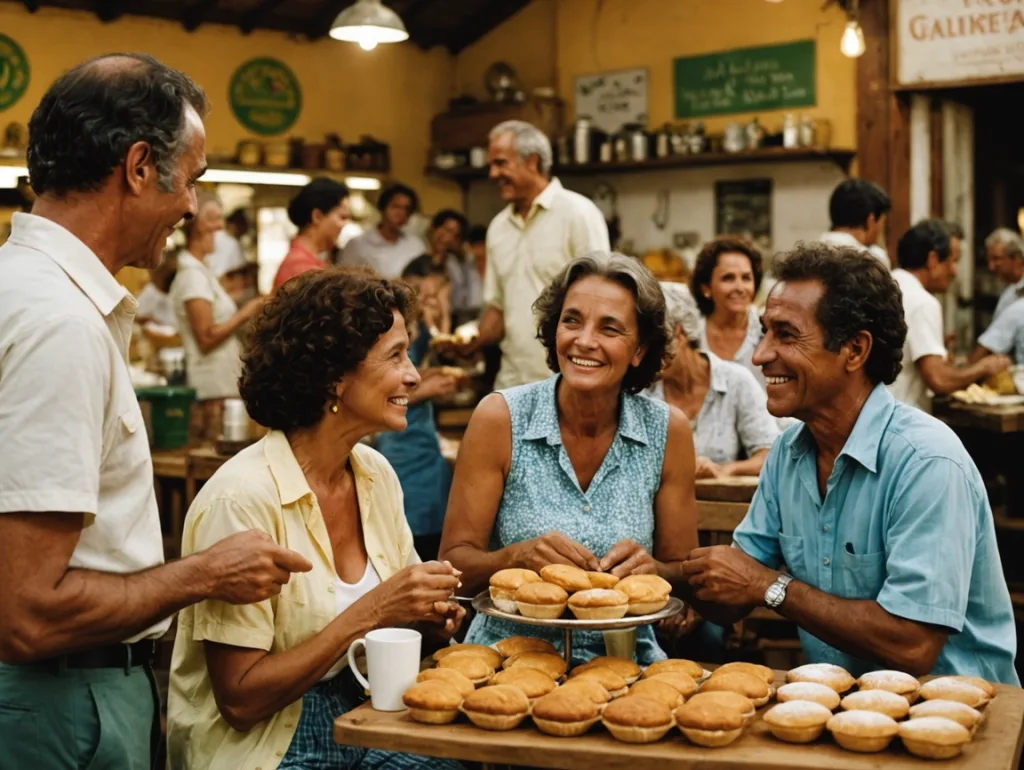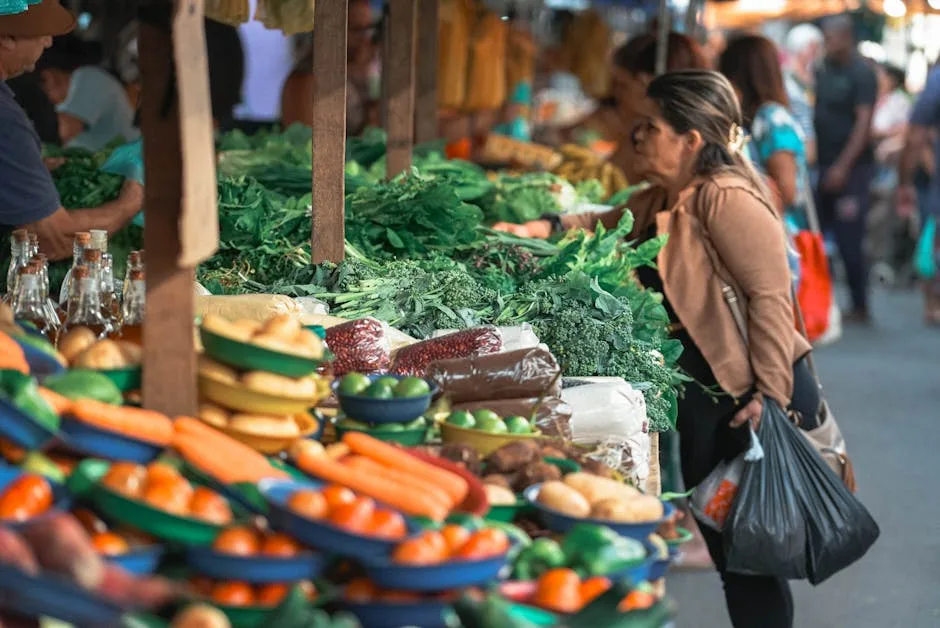More Than a Meal: Street Food is the Heartbeat of Salvador
Welcome to Salvador, the vibrant, beating heart of brazil‘s northeastern state of Bahia. If you’re anything like me, you believe the quickest way to understand a new culture is through its stomach. And here, in this city pulsating with Afro-Brazilian rhythm, history, and color, the sidewalks are the dining room. Forget fancy restaurants for a moment; the real soul of Salvador isn’t found on a porcelain plate, but served hot and fresh from the hands of a smiling street vendor.
Bahian street food is a testament to its history. It’s a delicious, complex tapestry woven from African traditions, Indigenous ingredients, and a touch of Portuguese influence. The key to it all? A magic ingredient called azeite de dendê, a rich, red palm oil that gives bahian cuisine its distinctive color, aroma, and unmistakable flavor. So, loosen your belt, bring some small bills, and let’s take a walk through the most incredible open-air kitchen you’ll ever experience.
The Undisputed Queen: Acarajé
You can’t talk about Bahian street food without starting with its reigning monarch: the Acarajé. You’ll smell it before you see it—the nutty, savory aroma of black-eyed peas frying in bubbling dendê oil. You’ll see the vendors, the iconic Baianas de Acarajé, dressed in their traditional white lace blouses, layered skirts, and colorful headwraps. They are more than just cooks; they are priestesses, cultural guardians, and a living link to the Candomblé religion, where acarajé is an offering to the orixá (goddess) Iansã.
Buying your first acarajé is a rite of passage. The Baiana will take a ball of seasoned, mashed black-eyed pea dough and expertly drop it into a vat of shimmering red palm oil. It sizzles and puffs up into a golden-brown fritter, crispy on the outside and fluffy on the inside. She’ll then slice it open and ask the most important question of your day: “Quente ou frio?” (Hot or cold?).
Navigating the Fillings
This isn’t about the temperature of the fritter. “Quente” means she’ll add a generous dollop of fiery, homemade pepper sauce. “Frio” means without. As a first-timer, you might want to ask for “um pouco de pimenta” (a little pepper) to test the waters. The fillings are what elevate this from a simple snack to a full meal:
- Vatapá: A creamy, rich paste made from bread, shrimp, coconut milk, ground peanuts, and, of course, dendê oil.
- Caruru: A flavorful okra gumbo, also made with shrimp, nuts, and dendê.
- Vinaigrette: A fresh, zesty salsa of chopped tomatoes, onions, and cilantro that cuts through the richness.
- Dried Shrimp: Tiny, salty shrimp that add a final punch of flavor and texture.
When she hands you the finished product, wrapped in paper, find a spot on the curb and dive in. The combination of the crunchy fritter, the creamy vatapá, the zesty salsa, and the salty shrimp is a flavor explosion that is uniquely, unforgettably Bahian.
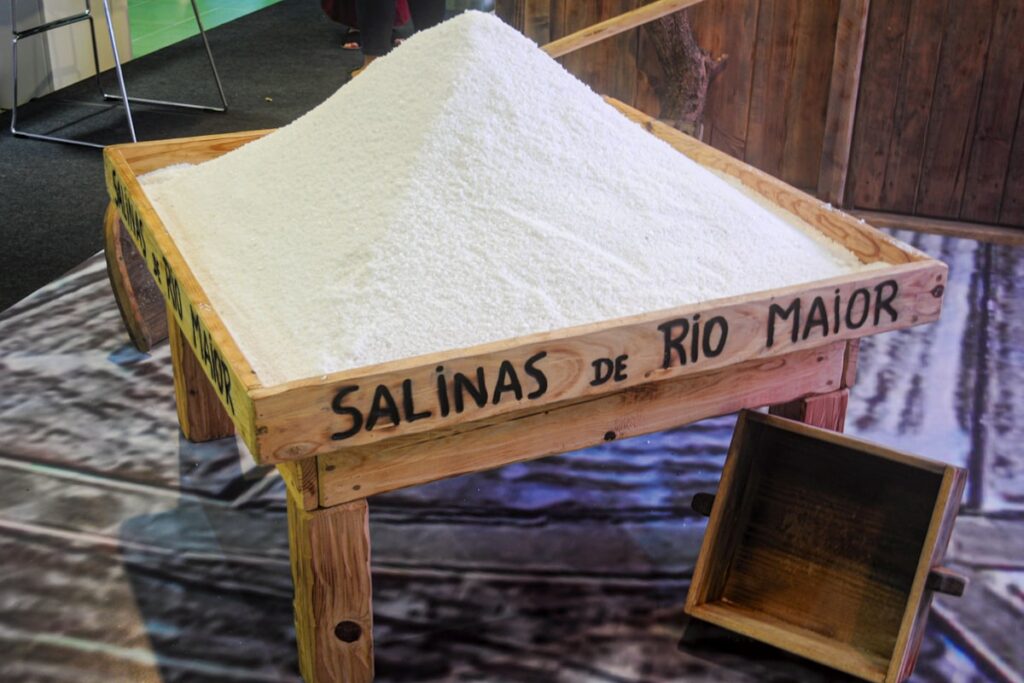
Abará: The Steamed and Gentle Cousin
If the boisterous, crispy acarajé is the life of the party, abará is its more reserved, sophisticated cousin. It’s made from the exact same black-eyed pea dough, but instead of being deep-fried, it’s wrapped in a banana leaf and steamed. The result is a completely different experience.
The abará has a soft, dense, almost tamale-like texture. It’s smoother and more subtle, allowing the flavors of the fillings to shine in a new way. It’s a fantastic option if you find the fried acarajé a bit too heavy or if you’re looking to try a different preparation of that classic Bahian flavor profile. Many Baianas sell both, so you can conduct your own delicious side-by-side comparison. For many locals, the choice between acarajé and abará is a matter of fierce personal loyalty!
For the Sweet Tooth: Cocada, Bolo de Estudante, and More
After all that savory dendê, you’ll need something sweet to balance your palate. Luckily, Salvador’s streets have you covered. The star of the show is Cocada, a coconut candy that comes in a dazzling array of styles.
A Symphony of Coconut
You’ll find vendors with large trays piled high with different types of cocada. Don’t be shy; they are all worth a try:
- Cocada Branca: The classic white version, made with just sugar and shredded coconut. It can be soft and chewy (puxa-puxa) or hard and brittle.
- Cocada Preta (or Queimada): Made with brown sugar, which gives it a darker color and a deeper, almost caramel-like flavor.
- Cocada Cremosa: A creamy, spoonable version often sold in jars, made with condensed milk for an extra decadent texture.
Another must-try sweet is the curiously named Bolo de Estudante (Student’s Cake). It’s not really a cake in the traditional sense. It’s a dense, chewy cylinder made from tapioca, coconut, and sugar, fried and then rolled in more sugar and cinnamon. It’s unbelievably satisfying and the perfect pick-me-up while exploring the historic streets of the Pelourinho.
Grilled Goodness on a Stick: Espetinhos
As evening falls, a different kind of aroma fills the air: the unmistakable smell of grilled meat. All over the city, you’ll find vendors firing up small charcoal grills to make espetinhos (skewers). It’s simple, delicious, and a huge part of the local social scene.
The options are plentiful. You can get classic beef (carne), chicken (frango), or sausage (linguiça). For the more adventurous, look for coração de galinha (chicken hearts), a beloved Brazilian delicacy. My personal favorite is the queijo coalho, a firm, salty cheese that gets grilled until it’s crispy and melty on the outside but still holds its shape. Whichever you choose, the vendor will grill it to perfection and then, in a masterful final step, roll it in a container of farofa—toasted and seasoned manioc flour—which adds a delightful crunch and savory flavor. It’s the perfect companion to a cold beer on a warm Bahian night.
Beyond the Classics: Savory Hidden Gems
While acarajé and espetinhos might be the most famous, there are other street food treasures waiting to be discovered. Keep an eye out for vendors selling caldinho, small cups of hot, savory broth. Caldinho de Feijão (black bean broth) is a popular choice, often seasoned with bacon and herbs. In areas closer to the water, you might find Caldinho de Sururu, made from tiny, local mussels. It’s a warm, comforting hug in a cup.
Another treat to look for is the classic Brazilian pastel. These are large, thin pockets of dough, deep-fried until bubbly and crisp, and filled with everything from ground meat or cheese to palm hearts. While you can find pastel all over Brazil, trying one with a uniquely Bahian filling like dried shrimp and coconut is a must.
Quench Your Thirst: Street-Side Drinks
All this eating is bound to make you thirsty. Fortunately, the streets of Salvador offer plenty of refreshing options. The most iconic is Água de Coco. Vendors will expertly chop the top off a chilled green coconut with a machete, pop in a straw, and hand you nature’s perfect electrolyte drink. It’s hydrating, delicious, and an essential part of the Bahian beach experience.
For something sweeter, look for the hand-cranked carts selling Caldo de Cana (or Garapa). They feed long stalks of sugarcane through a press, producing a sweet, slightly grassy green juice right before your eyes. Ask for it “com limão” to have a squeeze of lime added, which perfectly cuts the sweetness and makes it even more refreshing.
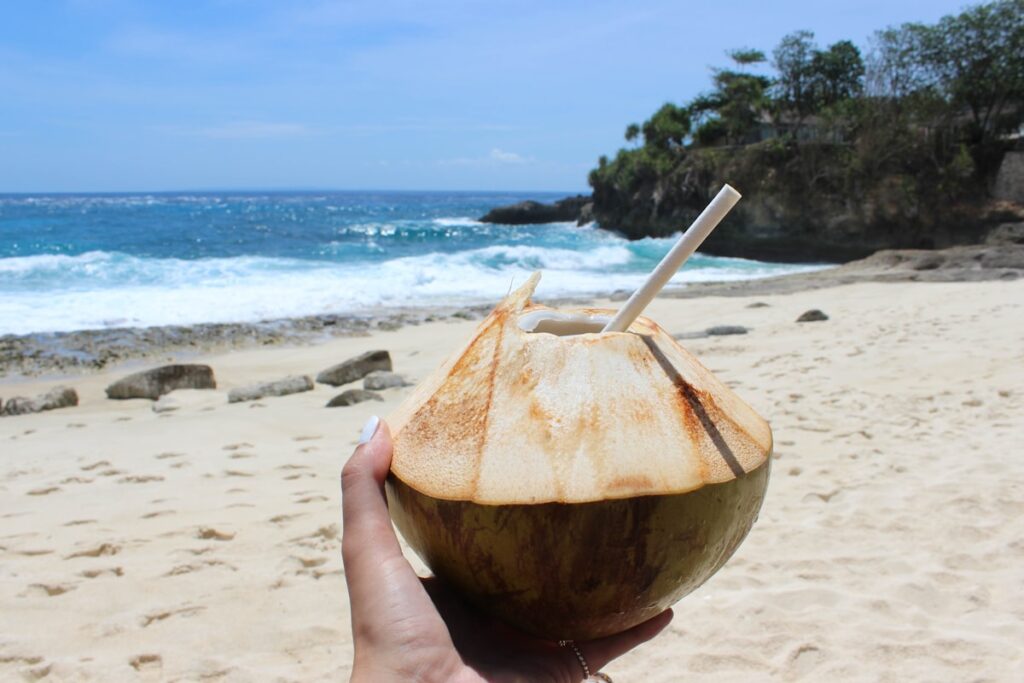
A Foreigner’s Pocket Guide to Eating on the Street
Feeling ready to dive in? Here are a few final tips to make your Salvador street food adventure a roaring success:
- Follow the Locals: The golden rule of street food anywhere in the world. A long line of Brazilians is the best Yelp review you can get. It means the food is fresh, delicious, and trusted.
- Cash is King: While credit cards are becoming more common, many smaller street vendors operate on a cash-only basis. Always have some small Reais bills on hand.
- Observe the Setup: Take a quick look at the vendor’s station. Does it look clean? Is the oil fresh? Are they handling food and money separately? Use your common sense. The vast majority of vendors, especially the Baianas de Acarajé, maintain very high standards.
- Learn a Little Lingo: You don’t need to be fluent, but a few key phrases will go a long way. “Quero um, por favor” (I want one, please), “Quanto custa?” (How much is it?), and the all-important “Com pimenta” (with pepper) or “Sem pimenta” (without pepper) will make the experience smoother and more fun.
Eating street food in Salvador is about so much more than just filling your belly. It’s about participating in a daily ritual, connecting with the city’s history, and tasting the very essence of Bahian culture in every single bite. So be bold, be curious, and get ready to eat your heart out.

